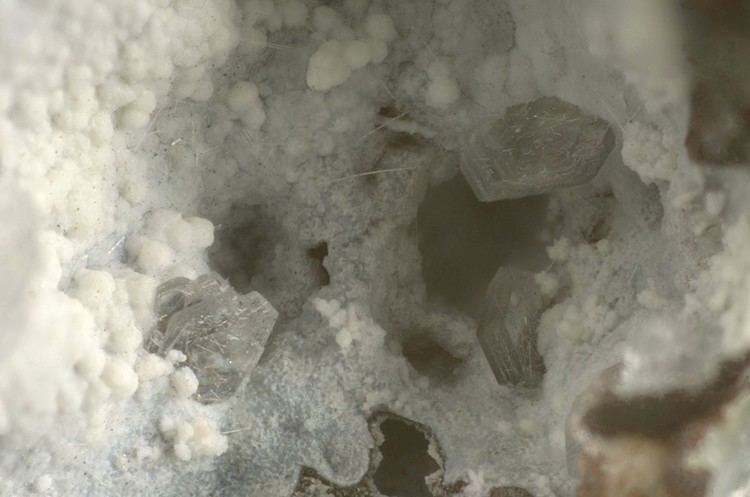Appearance White solid | ||
 | ||
Formula Ca2Al(OH)6(Cl, OH) · 2 H2O | ||
Friedel's salt is an anion exchanger mineral belonging to the family of the layered double hydroxides (LDHs). It has affinity for anions as chloride and iodide and is capable to retain them to a certain extent in its crystallographical structure.
Contents
Composition
Friedel's salt general formula is:
Ca2Al(OH)6(Cl, OH) · 2 H2O.In the cement chemist notation, considering that
2 OH− ↔ O2− + H2O,and doubling all the stoichiometry, it can also be written as follows:
3CaO·Al2O3·CaCl2 · 10 H2OFriedel's salt can also be considered as an AFm phase in which chloride ions have replaced sulfate ions and is formed in cements initially rich in tri-calcium aluminate (C3A).
2 Cl− + 3CaO·Al2O3·CaSO4 · 10 H2O → 3CaO·Al2O3·CaCl2 · 10 H2O + SO42−It plays a main role in the retention of chloride anions in cement and concrete. However, Friedel's salt remains a poorly understood phase in the CaO-Al2O3-CaCl2-H2O system, and is critical for the stability of salt-saturated Portland cement-based grouts.
Discovery
Nowadays, Friedel's salt discovery is relatively difficult to trace back from the recent literature, simply because it is an ancient finding of a poorly known and non-natural product. It has been synthesised and identified in 1897 by Georges Friedel, mineralogist and crystallographer, son of the famous French chemist Charles Friedel. Georges Friedel also synthesised Calcium aluminate (1903) in the framework of his work on the Macles theory (twin crystals). This point requires further verification.
